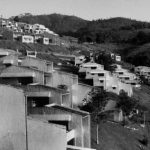Architecture in educational syllabuses everywhere has been defined as both an art and science, but its ultimate function tends to vary from architect to architect. Andrea Oppenheimer’s Rural Studio: Samuel Mockbee and an Architecture of Decency introduces us to a vivid world where an architect chooses virtue over grandeur and firmly grounds his work into a foundation of social responsibility.
By Shifani Reffai
 In the Introduction, Oppenheimer describes Samuel Mockbee as saying “Addressing problems and trying to correct them is the role an artist or architect should play.” What sets him apart from other architects today is the Rural Studio, the subject of Oppenheimer’s study. Founded in the early 1990s, it is set in the heart of Hale County, an impoverished zone of Alabama – “a left behind place.” At the Rural Studio, Mockbee mentors second year to fifth year architecture students from Auburn University – taken out of the shelter of their classrooms back home – to deal in “hands-on design construction and in nose-to-nose negotiations with impoverished clients.” Mockbee comes off as a dedicated designer and a determined activist of sorts, but a very down-to-earth and laidback human being and teacher, portrayed by Oppenheimer’s quotes from second and fifth-year students throughout the book describing him as a friend rather than a superior.
In the Introduction, Oppenheimer describes Samuel Mockbee as saying “Addressing problems and trying to correct them is the role an artist or architect should play.” What sets him apart from other architects today is the Rural Studio, the subject of Oppenheimer’s study. Founded in the early 1990s, it is set in the heart of Hale County, an impoverished zone of Alabama – “a left behind place.” At the Rural Studio, Mockbee mentors second year to fifth year architecture students from Auburn University – taken out of the shelter of their classrooms back home – to deal in “hands-on design construction and in nose-to-nose negotiations with impoverished clients.” Mockbee comes off as a dedicated designer and a determined activist of sorts, but a very down-to-earth and laidback human being and teacher, portrayed by Oppenheimer’s quotes from second and fifth-year students throughout the book describing him as a friend rather than a superior.
Rural Studio is a guide to the creative and functional new architecture in Hale County, portraying good modern architecture as much more than marvelous sculptures and designs that push boundaries – but as a basic human need. The pictures Oppenheimer paints with words and the bold vivid photographs taken by Timothy Hursley, warrants a reintroduction of socially concerned architecture and dispels the old notion that ‘the poor cannot afford good architecture.’
The consequent theme of the book is well brought out in the introduction, as the chairman of architecture at Auburn University,
D K Ruth, expresses that architectural education had become more about academics and less about construction; “the connection between aesthetics and the realities underlying design was being lost.” The solution seems to be a Rural Studio setting – where students not only meet and talk to their client and their families but also live in their clients’ environment, are exposed to their needs and state of economy, forming a human bond with them.
Interesting projects illustrated are the Bryant House fondly called the Hay Bale House because of its ingenious design; in search of a low tech methodology for creating inexpensive, well insulated walls for the Bryant home, the students “wrapped eighty pound hay bales in polyurethane, stacked them like bricks, secured the stacks with wires, and slathered the result with several coats of stucco.” Although skeptical at first, Bryant was to have said years later of Mockbee and his studio of students, “I believe the Lord sent them by.”
Another notable design in the book is the Harris (Butterfly) House, with a beautiful wing-like roof structure, designed to harvest rainwater, and to maximize natural ventilation along with the windows of the clerestories inside. Despite its original and startling design, it retains a homely elegance and fits right in with its context. Some of the other innovative marvels by the Rural Studio include – the wall of the Mason’s Bend Community Center made of overlapping automobile windshields, the ‘Pods’ in which Rural Studio students live, made of a delightful conglomeration of everything from corrugated wax impregnated boards, old street signs, bits of steel plate, local newspaper and surplus license plates; the walls of the Yancey Chapel made of automobile tires and stucco, a beautiful textured sight, topped by a long progressing roof that widens out to a magnificent view of the surrounding forest and the Akron Pavilion, which appears to be simply a huge slanting roof and a floor, with slender columns in heavy concrete shoes. These projects are all funded by donations and grants from different sectors of the state, and most of the material used for construction is locally found.
 The book ends with firsthand accounts from students at the Rural Studio as interviewed by Oppenheimer, and a series of abstract paintings inspired by the Rural Studio experience by Samuel Mockbee, accompanied by an interesting art critique by the author.
The book ends with firsthand accounts from students at the Rural Studio as interviewed by Oppenheimer, and a series of abstract paintings inspired by the Rural Studio experience by Samuel Mockbee, accompanied by an interesting art critique by the author.
Rural Studio is most definitely a book that all students of architecture must have a look through, as it takes one through not just the exploration of materials and innovation but also adds a new character to the theory of architecture: social relevance. The book is also a lively read for anybody, regardless of their involvement in architecture.











